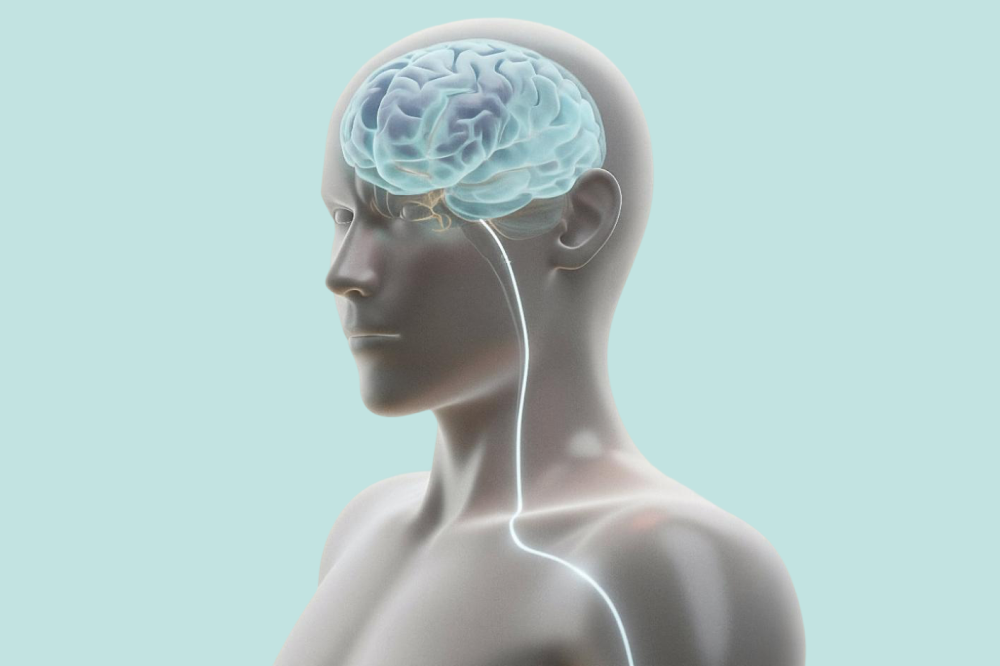What Three Randomized Placebo Controlled Trials Reveal About Remote Electrical Neuromodulation for Migraine
What do three randomized control trials tell us about the benefits and opportunities in non-pharmacological migraine treatment?

Migraine treatment is undergoing a transformation. As healthcare providers seek more effective, tolerable and patient-centered options, a growing body of evidence supports Remote Electrical Neuromodulation (REN) as a meaningful therapeutic tool. In fact, across three randomized, double-blind, placebo-controlled trials, REN has demonstrated consistent, clinically relevant efficacy in both episodic and chronic migraine, with minimal side effects and patient-friendly delivery.
These trials, conducted in diverse populations and use cases, collectively build a compelling case for REN as a routine, non-invasive option across the continuum of migraine management.
A Shared Mechanism: Activated Conditioned Pain Modulation
At the core of REN’s efficacy is its mechanism: the activation of descending pain inhibitory pathways through conditioned pain modulation (CPM). Rather than targeting pain locally (as in traditional neuromodulation based on gate control theory), REN stimulates peripheral nerves in the upper arm to engage central pathways–specifically the periaqueductal gray and rostral ventromedial medulla–which in turn suppress migraine pain via serotonin and norepinephrine release.
This unique mechanism underpins all three trials, allowing a single wearable device to show efficacy in both acute pain reduction and migraine frequency prevention.
REN for Acute Migraine: Consistent, Drug-Free Relief
Two RCTs evaluated REN as an acute treatment for migraine, both demonstrating statistically significant improvements over sham treatment.
Trial 1: Remote Nonpainful Electrical Stimulation at Attack Onset
In the first study, [1] patients who treated migraine with non painful upper-arm stimulation experienced significantly greater pain relief than those receiving sham treatment. The effect was more pronounced when REN was used within 20 minutes of symptoms onset, reducing pain by nearly half–a finding that mirrors the time-dependent efficacy with triptans.
“Nonpainful remote skin stimulation can significantly reduce migraine pain, especially when applied early in the attack.” [1]
These therapeutic benefits validate CPM as the underlying mechanism.
Trial 2: Multicenter Pivotal Study Confirms Acute Efficacy
In a larger, multicenter RCT, [2] 66.7% of patients using REN achieved pain relief at 2 hours post-treatment, compared to 38.8% in the sham group (therapeutic gain: 27.9% p <.0001). Pain-free rates (37.4% vs 18.4%) and most bothersome symptoms relief were also significantly higher. These outcomes were sustained for 48 hours, underscoring the durability of effect.
REN’s 2-hour pain-free response rates were comparable to those of triptans and newer gepants, but with fewer adverse effects. [2]
Importantly, adverse events were rare and minor–mostly localized warmth or numbness in the arm–offering a favorable safety profile.
REN for Migraine Prevention: Efficacy That Builds Over Time
Beyond acute relief, one RCT investigated REN’s potential as a preventive therapy–with treatment applied every other day. The trial found significant reduction in monthly migraine days (MMDs), with early onset.
Trial 3: Pivotal Prevention Study Across Episodic and Chronic Migraine
In this large multicenter trial, [3] REN users experienced a mean reduction of 4.0 migraine days/month, compared to 1.3 in the sham group (p < .001). The therapeutic benefit was maintained across both chronic and episodic subgroups, and was also reflected in reduction of moderate/severe headache days and acute medication use. Over 50% of participants achieved at least a 50% reduction in headache frequency.
“REN offers a much-needed pharmacological alternative either as a stand-alone preventive therapy or in combination with pharmacologic therapies.” [3]
The device was well tolerated, with no serious adverse events reported.
Post-hoc analysis: Early Onset of Preventive Effect
A follow-up temporal analysis [4] revealed that preventive efficacy was detectable within 2 weeks–a finding aligned with patient preferences for fast-acting therapies. By week 8, therapeutic gain peaked at 2.7 fewer MMDs, with a parallel trajectory in both episodic and chronic migraine groups.
“These results are similar to those of oral CGRP preventives like atogepant–but with fewer side effects and faster onset in some cases.” [4]
This rapid response stands in contrast to traditional oral preventives, which may take several months to reach full effect.
Additionally, the positive effect increased over time; The largest impact was seen after 8 weeks of every-other-day treatment, underscoring the need for patients to consistently apply treatment to reap the greatest benefits.
Clinical Implications: A Versatile, Well-Tolerated Option
Taken together, these three RCTs demonstrate that REN is a rigorously tested, versatile therapy suitable for a broad spectrum of migraine patients. Clinicians can consider REN as:
- A first-line option for patients seeking drug-free acute relief
- A preventive strategy for those struggling with tolerability, adherence or contraindications to medication
- A complementary tool for patients with partial response to pharmacologic care
- Fitting for patients who could benefit from a drug-free approach or reduced drug load
The data also underscore a critical insight: timing matters. Whether for acute or preventive use, earlier and consistent engagement with REN yields better outcomes–reinforcing the importance of patient education and accessibility.
Evidence-Based Innovation in Migraine Care
The three RCTs reviewed here–spanning acute and preventive use, all placebo (sham) -controlled double-blinded designs in diverse populations–collectively validate REN as a safe, effective, tolerable and patient-friendly approach to migraine treatment. With growing real-world evidence and continued alignment with clinical guidelines, REN is poised to play a central role in reshaping how we approach this complex and burdensome disease and improving the lives of millions living with migraine.
References:
- Yarnitsky et al., Neurology, 2017
- Yarnitsky et al., Headache, 2019
- Tepper et al., Headache, 2023
- Blumenfeld et al., Pain Management, 2023


